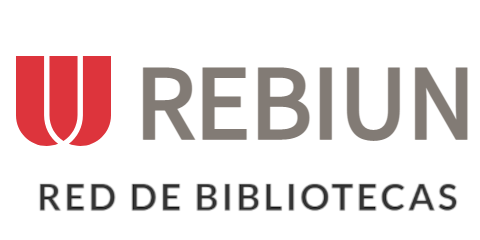Análisis de las Interacciones de la Capsaicina con el ADN y el ARN mediante Química Computacional
Resumen
Fruits of the Capsicum family or chilies, native to Mexico and Central America, exhibit highly diverse biological effects, including antioxidant, anti-inflammatory, and anticarcinogenic properties. This research used computational chemistry to determine the interactions between Capsaicin (CAP) and nitrogenous bases (NB). Parameterized semi-empirical model number 3 (SE-PM3) drew the corresponding molecules in the Hyperchem simulator. The geometry was optimized with the Polak Ribiere method, and the variables of HOMO-LUMO, Band gap (BG), Electronic potential (EP), and other properties were calculated. We found a small HOMO-LUMO energy gap of CAP molecules. This overlap leads us to conclude that CAP can form spheres and micelles. As a general conclusion, we found that CAP is not a mutagenic agent. Among 49 interactions, CAP showed its first interaction with uracil (CAP: U2), and therefore, it evidenced 19 more related interactions with freely formed NB.
Descargas
Citas
Agrawal, R. C., Wiessler, M., Hecker, E., & Bhide, S. V. (1986). Tumour-promoting effect of chilli extract in BALB/c mice. International Journal of Cancer, 38(5), 689–695. https://doi.org/10.1002/IJC.2910380512.
Ahuactzin-Pérez, M., Tlecuitl-Beristain, S., García-Dávila, J., Santacruz-Juárez, E., González-Pérez, M., Gutiérrez-Ruíz, M. C., & Sánchez, C. (2018). A novel biodegradation pathway of the endocrine-disruptor di (2-ethyl hexyl) phthalate by Pleurotus ostreatus based on quantum chemical investigation. Ecotoxicology and Environmental Safety, 147, 494–499. https://doi.org/10.1016/J.ECOENV.2017.09.004
Caterina, M. J. Schumacher; M.A., Tominaga; M., Rosen, T.A., Levine, J.D.; Julius, D.J. (1997). The Capsaicin receptor: A heat-activated ion channel in the pain pathway. Nature 389, 816–824.
Cijo G., V., Naveen Kumar, D. R., Suresh, P. K., & Ashok Kumar, R. (2015). Antioxidant, DNA protective efficacy and HPLC analysis of Annona muricata (soursop) extracts. Journal of Food Science Technology, 52(3). https://doi.org/10.1007/s13197-014-1289-7.
De Lourdes Reyes-Escogido, M., Gonzalez-Mondragon, E. G., & Vazquez-Tzompantzi, E. (2011). Chemical and pharmacological aspects of Capsaicin. In Molecules ( Vol. 16, Issue 2, pp. 1253–1270. https://doi.org/10.3390/molecules16021253.
De, A. K., Agarwal, K., Mukherjee, A., & Sengupta, D. (1995). Inhibition by Capsaicin against cyclophosphamide-induced clastogenicity and DNA damage in mice. Mutation Research/Environmental Mutagenesis and Related Subjects, 335 (3), 253–258. https://doi.org/10.1016/0165-1161(95)00028-3.
González-Pérez, M. (2017). Quantum modeling to determine the carcinogenic potential of aflatoxin B1 produced by Aspegillus sp and its metabolic derivate aflatoxin M1 Modelamiento cuántico para determinar el potencial cancerígeno de la aflatoxina B1 producida por Aspegillus sp y de su derivado metabólico aflatoxina M1 ORIGINAL RESEARCH. Mexican Journal of Biotechnology, 2(2), 255–270. https://doi.org/10.29267/mxjb.2017.2.2.255.
González-Pérez, M. (2017). Quantum Theory of the Electron Transfer Coefficient. International Journal of Advanced Engineering, Management and Science, 3(10), 1024–1028. https://doi.org/10.24001/ijaems.3.10.9.
Kaiser, M. & Goycoolea (2014) F. M. in Capsaicin: Food Sources, Medical Uses and Health Implications (ed Gilliam, B. ) 53–74 Nova Science Publishers.
Kaiser, M., Pereira, S., Pohl, L. (2015). Chitosan encapsulation modulates the effect of Capsaicin on the tight junctions of MDCK cells .Science Reports, 5, 10048. https://doi.org/10.1038/srep10048.
Kogure, K., Goto, S., Nishimura, M., Yasumoto, M., Abe, K., Ohiwa, C., Sassa, H., Kusumi, T., & Terada, H. (2002). Mechanism of potent antiperoxidative effect of Capsaicin. Biochimica et Biophysica Acta - General Subjects, 1573(1), 84–92. https://doi.org/10.1016/S0304-4165(02)00335-5.
Lan, Y., Sun, Y., Yang, T., Ma, X., Cao, M., Liu, L., Liu, Y. (2019). Co-delivery of paclitaxel by a capsaicin prodrug micelle facilitating for combination therapy on breast cancer. Molecular pharmaceutics, 16(8), 3430-3440.
Liu, X., Saleh ,A.S.M., Zhang, B., Liang, W., Zhao, W., Zheng, J., Ge, X., Shen, H., Li, W. (2023). Capsaicin microcapsules with high encapsulation efficiency and storage stability based on sodium caseinate–acetylated wheat starch: preparation and characterization International Journal of Food Science & Technology. V. 58, 2, pp. 741-754. https://doi.org/10.1111/ijfs.16225.
López-Carnllo, L., Avila, M. H., & Dubrow, R. (1994). Chili Pepper Consumption and Gastric Cancer in Mexico: A Case-Control Study. American Journal of Epidemiology, 139(3), 263–271. https://doi.org/10.1093/OXFORDJOURNALS.AJE.A116993
Lu, M., Chen, C., Lan, Y., Xiao, J., Li, R., Huang, J., Ho, C. T. (2020). Capsaicin—The major bioactive ingredient of chili peppers: Bio-efficacy and delivery systems. Food & function, 11(4), 2848-2860.
Obot, I. B., Macdonald, D. D., & Gasem, Z. M. (2015). Density functional theory (DFT) as a powerful tool for designing new organic corrosion inhibitors: Part 1: An overview. In Corrosion Science (Vol. 99, pp. 1–30). Elsevier Ltd. https://doi.org/10.1016/j.corsci.2015.01.037
Olguín-Rojas, J. A., Fayos, O., Abel Vázquez-León, L., Ferreiro-González, M., Del Carmen Rodríguez-Jimenes, G., Palma, M., Garcés-Claver, A., & Barbero, G. F. (2019). Progression of the total and individual Capsaicinoids content in the fruits of three different cultivars of Capsicum chinense Jacq. https://doi.org/10.3390/agronomy9030141
Olguín-Rojas, J. A., Morales-Guillermo, M., Escobar, J. C., Ramirez-Velazquez, M., Torres-Cadena, J., Garcia-Alvarado, M. A., Rodriguez-Jimenes G.C. (2017) Secado por aspersion de extractos de chile habanero empleando goma arabiga como material de soporte. Avance de la Ciencia en México. Ed. Centro de Investigaciones en Óptica A.C.
Qais, F. A., Abdullah, K. M., Alam, M. M., Naseem, I., & Ahmad, I. (2017). Interaction of Capsaicin with calf thymus DNA: A multi-spectroscopic and molecular modelling study. International Journal of Biological Macromolecules, 97, 392–402. https://doi.org/10.1016/J.IJBIOMAC.2017.01.022
Ranjan, A., Ramachandran, S., Gupta, N., Kaushik, I., Wright, S., Srivastava, S., Das, H., Srivastava, S., Prasad, S., & Srivastava, S. K. (2019). Role of phytochemicals in cancer prevention. International Journal of Molecular Sciences 2019, Vol. 20, Page 4981, 20(20), 4981. https://doi.org/10.3390/IJMS20204981
Rollyson, W. D., Stover, C. A., Brown, K. C., Perry, H. E., Stevenson, C. D., McNees, C. A., Ball, J. G., Valentovic, M. A., & Dasgupta, P. (2014). Bioavailability of Capsaicin and its implications for drug delivery. In Journal of Controlled Release (Vol. 196, pp. 96–105). https://doi.org/10.1016/j.jconrel.2014.09.027
Shiobara, T., Usui, T., Han, J., Isoda, H. & Nagumo, Y. (2013). The reversible increase in tight junction permeability induced by Capsaicin is mediated via cofilin-actin cytoskeletal dynamics and decreased level of occludin. PLoS ONE 8).
Surh, Y. J., Lee, E., & Lee, J. M. (1998). Chemoprotective properties of some pungent ingredients present in red pepper and ginger. Mutation Research - Fundamental and Molecular Mechanisms of Mutagenesis, 402(1–2), 259–267. https://doi.org/10.1016/S0027-5107(97)00305-9
Susuki T., & Iwai K. (1984). Constituents of Red Pepper Species: Chemistry, Biochemistry, Pharmacology, and food science of the pungent principle of Capsicum species. In The Alkaloids: Chemistry and Pharmacology (pp. 227–299). https://sci-hub.se/10.1016/S0099-9598(08)60072-3
Wu, X., Xu, N., Cheng, C., McClements, D.M., Chen, X., Zou. L., Liu, W. (2022), Encapsulation of hydrophobic Capsaicin within the aqueous phase of water-in-oil high internal phase emulsions: Controlled release, reduced irritation, and enhanced bioaccessibility. Food Hydrocolloids, V. 123, February 2022, 107184.
Zhang S, Wang D, Huang J, Hu Y, Xu Y. (2020) Application of capsaicin as a potential new therapeutic drug in human cancers. J Clin Pharm Ther; 45:16–28. https://doi.org/10.1111/jcpt.13039
Zhang, W., Liu, M., Liu, A., Zhai, G. (2017). Advances in functionalized mesoporous silica nanoparticles for tumor targeted drug delivery and theranostics. Current Pharmaceutical Design, 23(23), 3367-3382.
Živković, T. P. (1983). Molecular orbital resonance theory: A new approach to the treatment of quantum chemical problems. Theoretica Chimica Acta. 62(4): 335-350.
Derechos de autor 2023 José Arturo Olguín Rojas , Manuel González Pérez, Paulina Aguirre Lara, Cecilia Vázquez González, Laura M. Aguilar Veloz, Carlos Roberto Camarillo Rojas

Esta obra está bajo licencia internacional Creative Commons Reconocimiento 4.0.









.jpg)
























